www.healthrapy.com
Cooking Tips The Healthy Way
A part of maintaining a healthy food diet is to know the best cooking tips. There are different methods you can use to prepare foods. The end result is to avoid the loss of nutrients, yet getting the desirable taste for you and your family.
One is cooking your food, and the other is eating raw foods, mainly uncooked.
Eating raw food is also called, "living foods." Many people love this type of diet as they are feeling the experience of being in nature. Below are some simple cooking options for you to plan healthy meals.
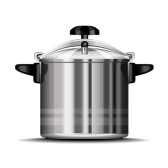
Pressure cooking: This is easy and healthy! It is cooking food under pressure for a short time.
This cooking method is probably the best one. Loss of nutrients is minimal, only about 5 - 10% of C, and B vitamins.
Pressure cooking should be done at temperatures of about 221 - 248 degrees Fahrenheit or 105 - 120 degrees Celsius.
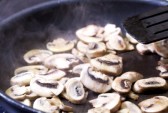
Sautéing: is like stir frying. This is also cooking light! Use a little fat, and just stir constantly. For a tastier meal, try soaking tender cuts of meat, and vegetables in a marinade.
Light steaming: is the perfect way to cook vegetables. It requires extremely low heat, and no water. Most of the nutrients remain.
What is another excellent choice? Steaming vegetables in the microwave is also a plus.
The cooking time for steaming is quick. The loss of vitamins C and B is about 10 - 25%. Quick cooking time should be about 2 - 3 minutes.
Want to add taste to vegetables?
Stewing: involves sautéing meat and fish in oil until golden brown. Vegetable stock, or water may also be added. We should not burn the meat.
At the point of simmering, we may add onion, scallion, thyme and other herbs.
Cooking tip: A little sugar may also enhance the taste.
Deep frying: and pan frying are not the most whole-some methods. They are used for the preparation of meat, fish, poultry, vegetables, and potatoes.
Frying should be done quickly to reduce the absorption of oil. Excess oil should be drained before serving.
Baking: is a process done mostly with potatoes, products made with dough, and some poultry. It does not require the use of extra fat or liquid.
Grilling: is a simple method to cook fish, meat, potatoes, some fruits and vegetables. This method is not the healthiest way of cooking.
With this method, foods can get charred easily.
Roasting: may be done on the stove top, or in the oven. If desired, oil may be used. The temperature used can be high or low.
Roasting at high temperature should be done for a short time: about 15 - 20 minutes. This allows the juices to keep the meat tender, and it remains moist.
Boiling: is the most appropriate method for cooking soups, rice, pasta and starchy ground provisions like yam and taro root. It is not the best way to prepare
vegetables because much of the vitamins are destroyed easily. That is a large 35 - 60%!
For canned vegetables, I select those with low sodium content. I drain the water first, before heating them in the microwave. Water from the can may be added to soups or sauces.
One side of boiling is that there is no need for the use of fat.
A great addition is to add some red wine vinegar to your mushrooms. Add a few scallions and some purple basil. You can also add one or two cloves of garlic.

A healthy cooking tip is to add onions, garlic, scallion and other fresh herbs. The addition of fresh herbs gives a boost of added vitamins.
The ideal temperatures for steaming are 212 degrees Fahrenheit or 100 degrees Celsius. Steaming is a convenient method for preparing fish, and potatoes.
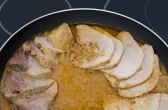
The stewing method may be used for vegetables and fruits too. Stewing destroys about 10 - 12% of vitamins.
What is the beauty of stewing? It is a light cooking method, so the food retains most of its nutritive value.
What are the disadvantages of stewing? The meat may be browned in oil. This oil becomes extra fat, which is not the most ideal for any diet plan.
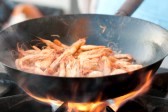
Frying should not be done in used oil. That is a suggestion. If the oil smokes before use, it should be discarded. This may be harmful to the body.
The advantage of frying is that there is minimal loss of vitamins, only about 7 - 10%. The disadvantage is the inclusion of too much fat, which ends up in the diet.
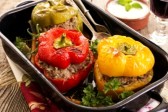
The amount of vitamins destroyed is about 10 - 12% of C, and B. Baked products are gentle on digestion, so this is a plus.
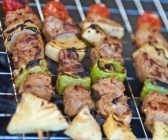
Charred meats contain substances that are carcinogenic. It is best to stay away from them. Cooking tip: Safe grilling will always keep charring at bay. The plus side of grilling is that it allows fat to drain out.
The down side is that the vitamins wasted amounts to about 10 - 12%.
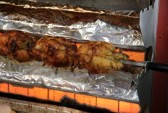
Temperatures used for roasting range between 284 - 392 degrees Fahrenheit or 140 - 200 degrees Celsius.
Roasting at a low temperature ranges between 154 - 176 degrees Fahrenheit or 68 - 80 degrees Celsius. This lengthy process takes several hours.
The seasoning soaks in well and enhances the flavor of the meat.
Roasting involves the cooking of food in its own juice. I brush the meat with this juice every 10 - 15 minutes. This keeps it moist.
During roasting, absorption of fat is minimal.
The down side of roasting is the loss of vitamins, and minerals. The meat also loses its moisture easily. However, the sauce can be replenished.
Brushing the meat every 10 - 15 minutes will keep it moist and tender. Roasting destroys about 10 - 47% of vitamins. Cooking tip: For a low fat meal, it is best to remove the dark brown or black skin before serving. This contains added fat, and it can also be carcinogenic.

A cooking tip is to avoid over-cooking vegetables. It is best to boil water over high heat. Turn off the stove burner, then add whole vegetables.
I make sure I cover the pot with a tight fitting lid. This helps with the retention of vitamins, and minerals. I drain off the water within 3 - 5 minutes,
and may keep it to add to soups, or use it to make a sauce.
Cooking tip: Water used for boiling should be minimal.
Boiling may be done at temperatures of about 212 degrees Fahrenheit or 100 degrees Celsius. This method is also fitting for the preparation of frozen vegetables. It is best not to thaw the vegetables first because they are likely to get soft and squishy. Frozen vegetables may be better prepared in the microwave.

Each of these methods of cooking, do not only provide nutritional meals, but gives you and your family wonderful meals for everyone to enjoy.
Food Pyramids Go With Cooking Tips ---
Food Recipes
Return to top